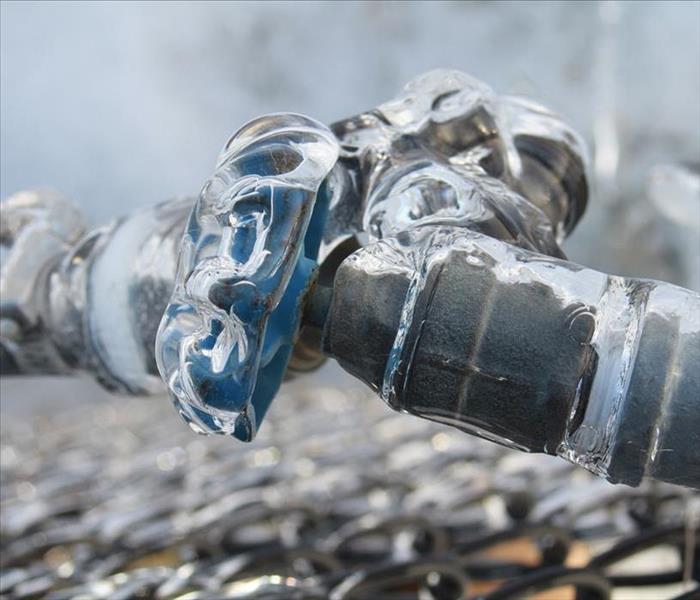Do You Know What Pipes Are Vulnerable to Freezing?
1/14/2022 (Permalink)
 If you have water damage due to frozen pipes, contact SERVPRO of Gordon, Murray, & South Whitfield Counties today.
If you have water damage due to frozen pipes, contact SERVPRO of Gordon, Murray, & South Whitfield Counties today.
Experiencing winter weather can certainly be an inconvenience. Between cold temperatures and high winds, it is not a season designed for comfort. However, when things turn frigid, there is also cause for concern regarding the pipes in your home.
While frozen pipes may seem like a problem that only occurs in the chilliest of places, depending on your home’s construction and insulation levels, it is still a real possibility here, too.
According to the Insurance Information Institute, water damage and freezing makes up over 23% of homeowner insurance claims in the United States. While instances of water damage due to frozen pipes may be covered on your insurance, it is still a headache that is better avoided when possible.
Below, we will look at the pipes in the home that are most vulnerable to freezing so you can be certain you know what to look out for.
The Pipes in a Home That Are the Most Vulnerable to Freezing
Pipes along exterior walls of the home. Depending on your home’s layout, plumbing can be routed through the walls in a variety of ways. Plumbing for the interior is commonly routed through exterior walls, and if you have outdoor spigots on your home, these pipes are also exposed to more of the exterior temperatures. When things get rather cold, these are typically the first pipes to freeze.
Pipes in the attic, crawlspace or basement. If you have an attic, crawlspace or basement that is not insulated, it is important to note if you also have plumbing in these areas. If you do, know that these pipes are also prone to freezing if it were to get cold enough. These pipes are rarely routed close to a home’s insulation, so they may be extra exposed.
Any home in a southern climate. While we may think of frozen pipes as a problem that only occurs in the cold of the northern half of the country, it is very likely for homes in the south to experience frozen pipes, too. Pipes in the south are rarely insulated heavily, so when we do get a cold snap, they are likely to be impacted.
If you have water damage due to frozen pipes, we can help. Contact us today to learn more about our water restoration services.



 24/7 Emergency Service
24/7 Emergency Service